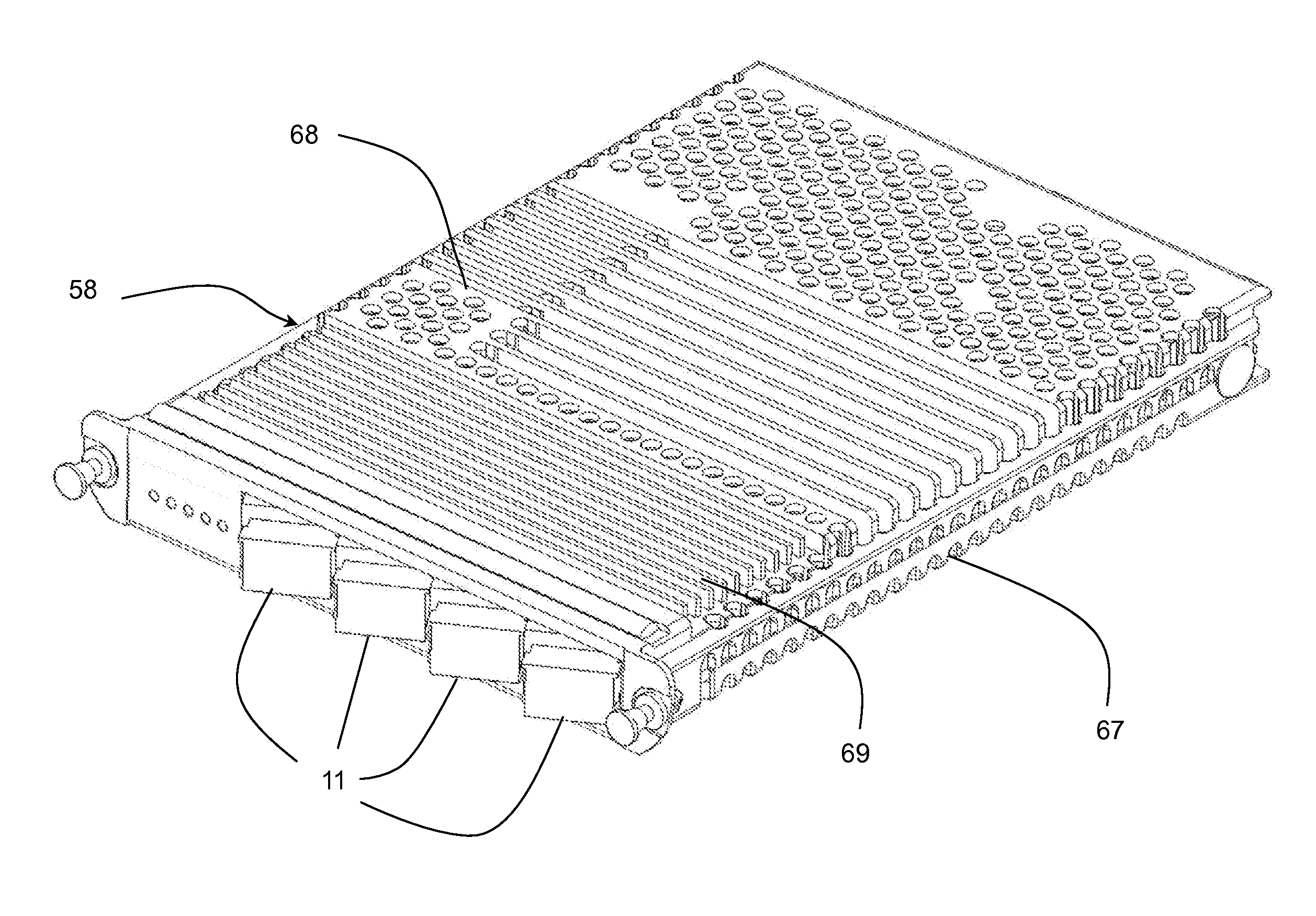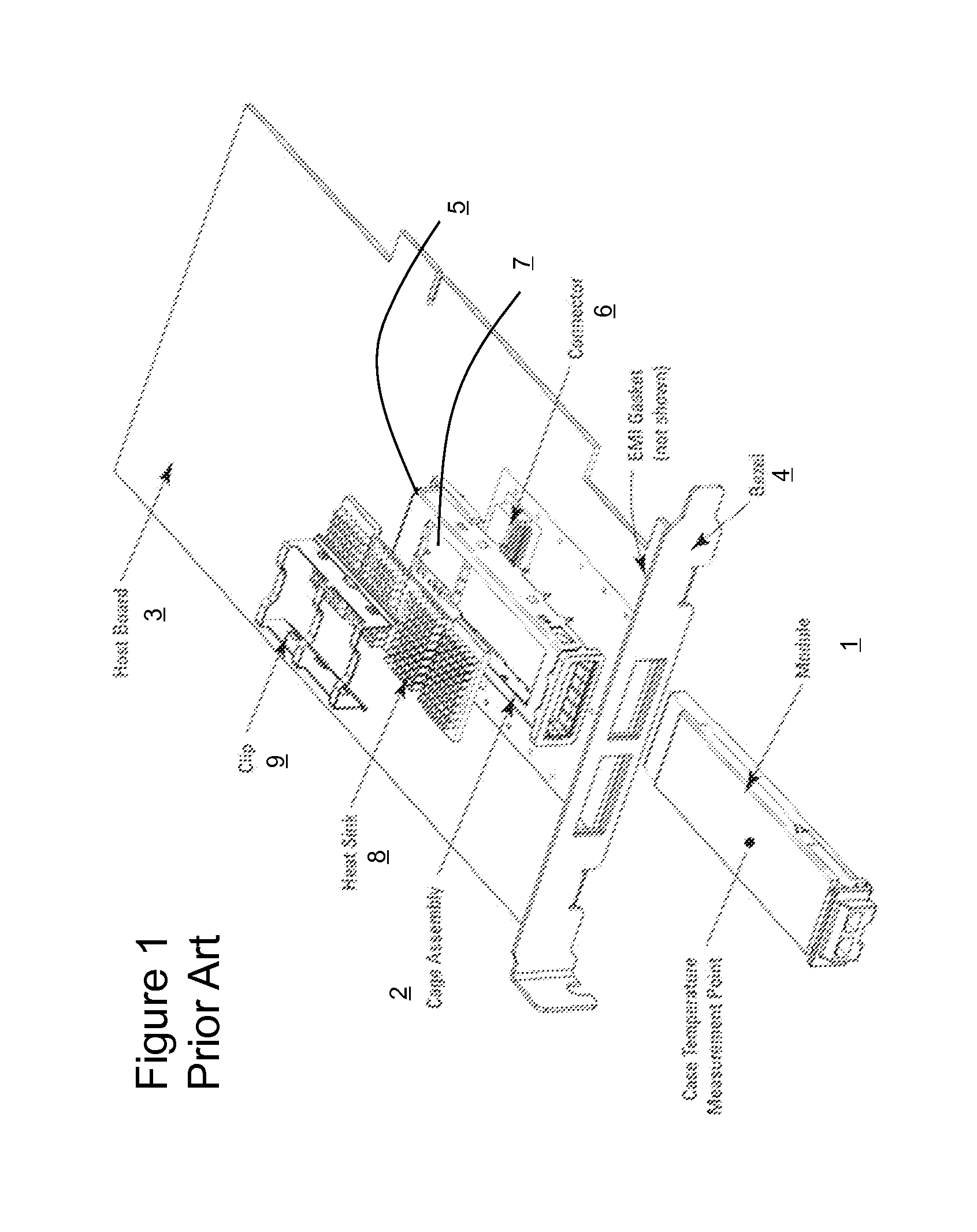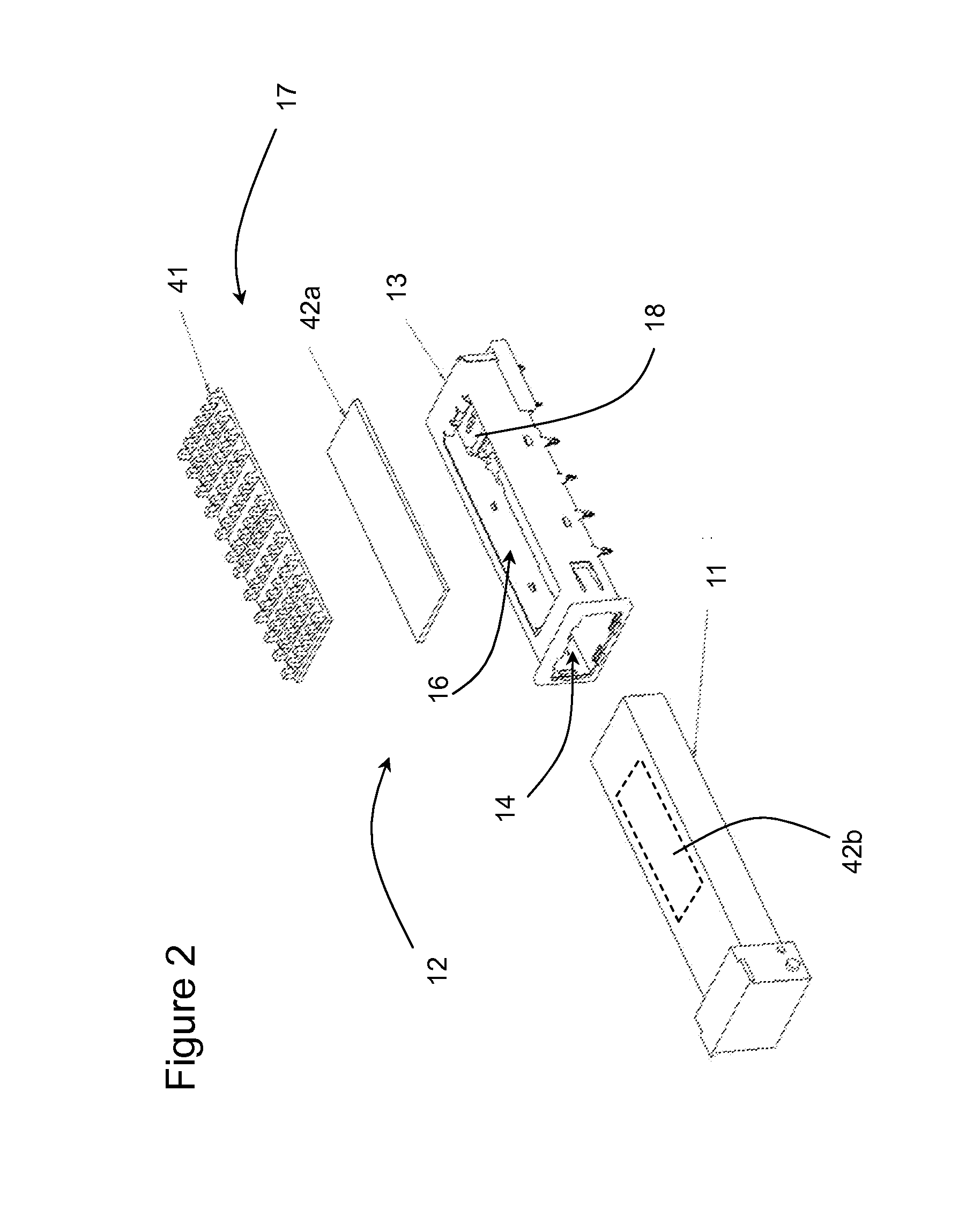Sliding thermal contact for pluggable optic modules
- Summary
- Abstract
- Description
- Claims
- Application Information
AI Technical Summary
Benefits of technology
Problems solved by technology
Method used
Image
Examples
Embodiment Construction
[0035]With reference to FIGS. 2 and 3, the present invention relates to a cage assembly 12 for receiving a pluggable optical module 11. The cage assembly 12 includes a rectangular, metal cage 13, as is known in the prior art, mounted on a printed circuit board 15, as in FIG. 1. The cage 13 includes a first opening 14 in a front wall for receiving the pluggable optical module 11, and a second opening 16 in an upper wall for receiving a heat sink assembly 17. The second opening 16 is at least half of the area of the upper wall, and preferably at least ¾ of the area of the upper wall, e.g. up to 90% of the area of the upper wall. An electrical connector 18 is mounted in the cage 13 on the printed circuit board for receiving a mating electrical connector on the pluggable optical module. The printed circuit board 15 includes trace electrical connectors for electrically connecting the connector 18 to a host computer system, within which the printed circuit board 15 is received.
[0036]The o...
PUM
| Property | Measurement | Unit |
|---|---|---|
| Length | aaaaa | aaaaa |
| Length | aaaaa | aaaaa |
| Fraction | aaaaa | aaaaa |
Abstract
Description
Claims
Application Information
 Login to View More
Login to View More - R&D
- Intellectual Property
- Life Sciences
- Materials
- Tech Scout
- Unparalleled Data Quality
- Higher Quality Content
- 60% Fewer Hallucinations
Browse by: Latest US Patents, China's latest patents, Technical Efficacy Thesaurus, Application Domain, Technology Topic, Popular Technical Reports.
© 2025 PatSnap. All rights reserved.Legal|Privacy policy|Modern Slavery Act Transparency Statement|Sitemap|About US| Contact US: help@patsnap.com



